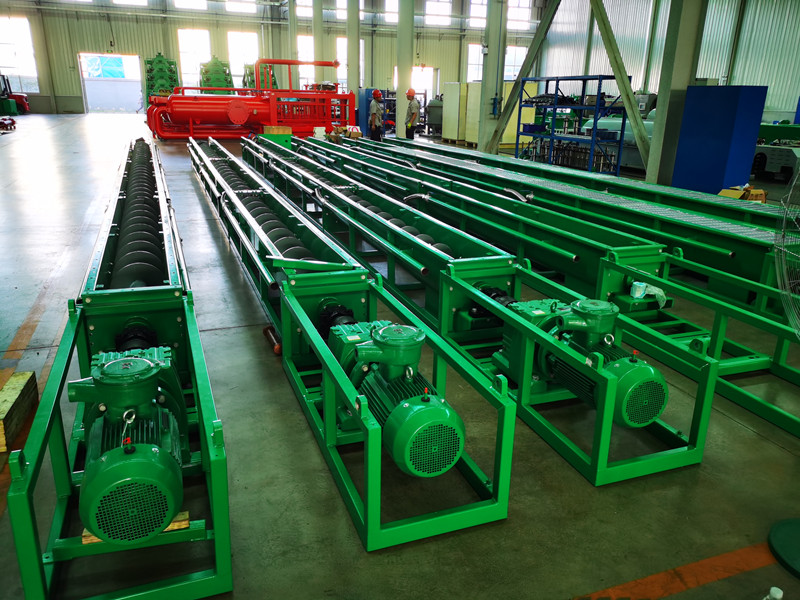A screw conveyor, also known as an auger, is a widely used equipment for transferring drilling cuttings from shale shakers, mud cleaners (desanders and desilters), decanter centrifuges, and carrying these cuttings for feeding to drilling waste management equipment, like to high G drying shale shaker, vertical cuttings dryer, filter press, etc…. It is also widely used to discharge solids from High G dryering shaker, the decanter centrifuge, etc… It is an essential part of solids control systems, efficiently moving waste material to designated disposal areas.

When it comes to operating a screw conveyor, users often have questions regarding the functionality of the manual variable speed feature. Weather they should choose the manual variable speed reducer screw conveyor, or the screw conveyor equipped with a VFD control panel? Whether the manual variable speed unit can be removed and the motor connected directly to the gearbox to convert it into a fixed-speed screw conveyor if the variable speed unit malfunctions.
Technically speaking, if the manual gearbox fails, it is not advisable to simply connect the motor directly to the gearbox. The gearbox is designed to operate with a manual variable speed adjustment, and removing this feature would compromise the system’s functionality. In this case, it would be necessary to replace the broken gearbox with a new one to maintain proper operation.
If you need to adjust the speed frequently, the better solution is to consider using a Variable Frequency Drive (VFD) control panel. A VFD provides a more flexible and efficient way to control the speed of the motor. It allows for on-demand speed adjustments without the need for manual changes, making it particularly useful in situations where the speed needs to be altered regularly. For example, if your operations require speed adjustments on a daily basis or at different drilling rigs, a VFD system would be much more convenient and effective.
However, if your operations involve fewer require speed adjustments on a daily basis or at different drilling rigs, a VFD system would be much more convenient and effective.
However, if your operations involve fewer speed changes and the equipment is mainly used in a fixed-speed setup for extended periods, a manual variable speed gearbox might still be suitable. The lifetime of both manual adjustment and standard gearboxes is quite long, especially if the speed adjustment does not need to be changed frequently. For rigs that move between locations and require minimal speed changes, the manual gearbox remains a reliable and durable option.
In summary, if you frequently need to adjust the speed of your screw conveyor, a VFD control system is the best choice. However, if the speed adjustment is minimal and you’re comfortable with a fixed speed, replacing the manual gearbox with a new unit will restore the system to its original functionality.